Essential Arts: What’s next for Plácido Domingo and L.A. Opera after more accusations?
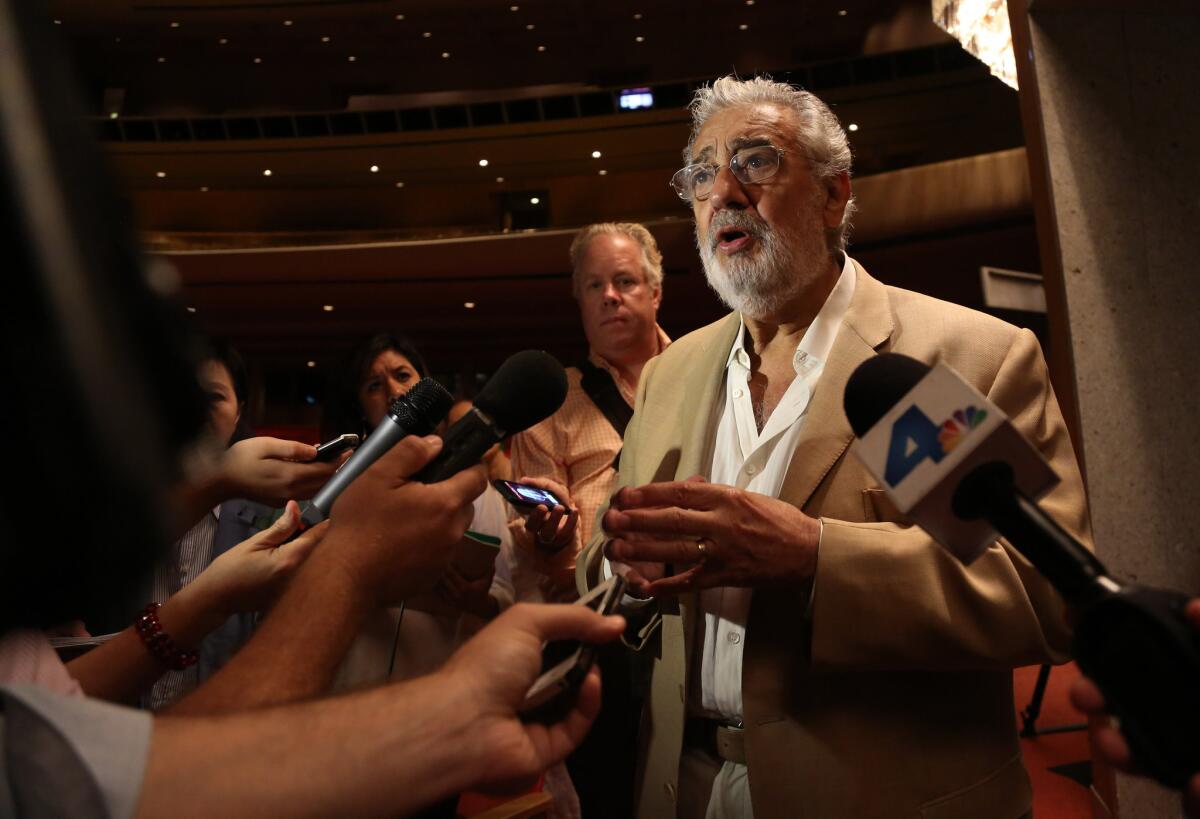
- Share via
Carolina Miranda is taking a well-deserved break from the newsletter beat today. But with more accusations against Plácido Domingo, a new Judy Chicago exhibition and more shows you shouldn’t miss, it’s not a week to sit out the arts. I’m Laurie Ochoa, L.A. Times arts and entertainment editor, and your substitute guide this week.
Opera under pressure
Times reporter Jessica Gelt has been tracking the fallout from new sexual harassment allegations made by 11 women against L.A. Opera director and star Plácido Domingo in an Associated Press story this week. The women cited “unwanted touching” and more acts similar to accusations in an earlier AP story. Domingo’s personal spokeswoman, Nancy Seltzer, called the new accusations “riddled with inconsistencies and, as with the first story, in many ways, simply incorrect.”
Still, with just a week until the start of the L.A. Opera season — and a donor-packed Opera Ball on the newly renovated Music Center Plaza to celebrate the opening night performance of La Bohème — pressure is building on the institution to take action.
Even before the new accusations, Gelt reported that questions were being asked about the L.A. Opera’s investigation. Some advocates for sexual misconduct survivors said it was “following a predictable and troubling script, largely because of the inherent conflict of interest that arises when arts companies essentially lead inquiries into themselves, with each investigator usually answering to a board of directors.”
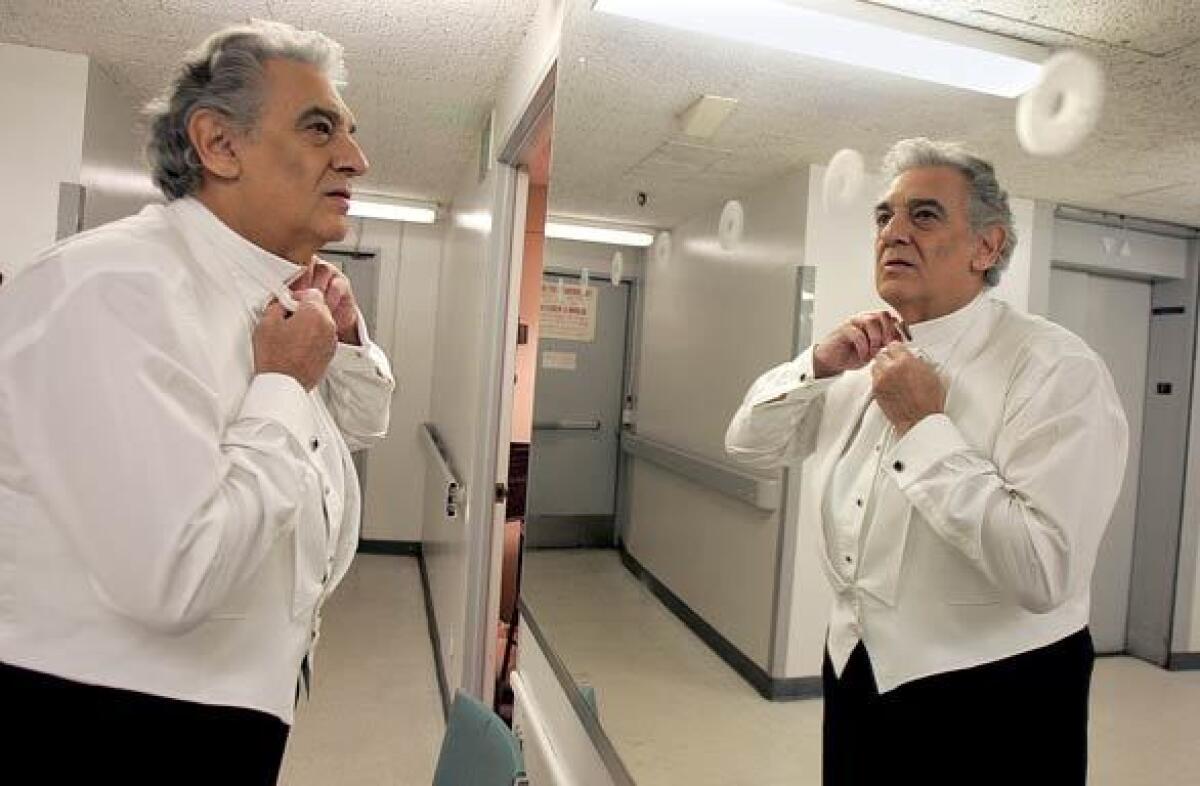
‘Witch’ magic
This is one I want to see: Times reviewer Margaret Gray loved “Witch,” Jen Silverman‘s reworking of the 1621 tragicomedy “The Witch of Edmonton.” Starring Maura Tierney, the play keeps the original’s Jacobean dress but ditches the period language. “Nary a ‘prithee’ or ‘forsooth,’” Gray says in her review. “Silverman lays bare the relatable emotions of the weird, mostly forgotten play.”
Times writer Ashley Lee saw “Witch” with an audience that audibly laughed and gasped as the story unfolded — until a man in the audience scolded the theater-goers: “It’s just a play, folks. Relax!”
“Why was our collective reaction so unacceptable to him?” Lee asks in her essay on her experience and other acts of audience policing — including the chastising Lin-Manuel Miranda got for laughing at a Broadway performance of “My Fair Lady.”
Springier Sophocles
Times theater critic Charles McNulty is still waiting for a production that can “meet the challenge of Sophocles’ hard-nosed brilliance in ‘Philoctetes.’” In the meantime, he took in “The Heal,” writer-director Aaron Posner’s “caricature done with care“ of “Philoctetes,” onstage throughout September at the Getty Villa. Posner, McNulty says, “willingly sacrifices lyricism for something, well, let’s just say springier” in a production that “seems designed expressly for distracted 21st century theatergoers.”
Chicago’s L.A. story
“I was being erased from the history of Southern California art,” artist Judy Chicago tells Times writer Carolina Miranda ahead of the opening this weekend of her solo show at Jeffrey Deitch gallery.
The interview delves into the ways L.A.’s art scene of the 1960s and ‘70s shaped her work. Don’t miss Chicago’s description of what it was like to be the only woman with 250 guys at auto body school, an unexpected place to find her artistic mission: “When I discovered spray paint — the idea of merging color and surface, I was hooked.”
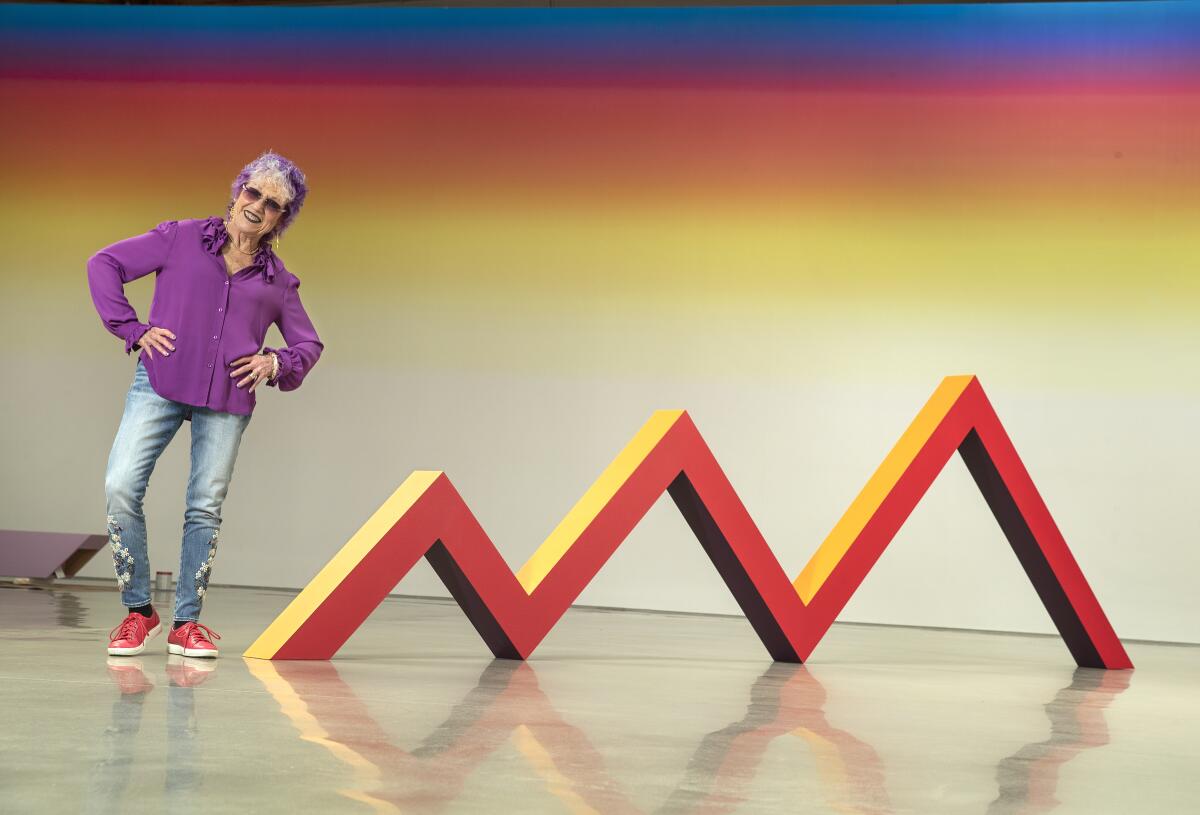
Save the Day-Glo
A fascinating read on the physics of paint vibrations and the attempt by conservator Kamila Korbela to save the day-glo hues of Frank Stella‘s 1965 color-block painting “Bampur,” which is on view at the Los Angeles County Museum of Art for the first time since 1980.

Digital woodworker
Times writer Deborah Vankin talked with L.A. artist Douglas Tausik Ryder about how he combines the craft of tactile, analog woodworking with tech — specifically 3-D modeling and an industrial Computer Numerical Control machine tool — for his large-scale sculptures. Some are now on view at Jason Vass gallery in downtown’s Arts District.
Blooming steel wool
Reviewer David Pagel found himself in an otherworldly garden where a steel-wool flower “has the presence of a robot gone rogue.” The exhibit “Blossoming Carcass,” inside Chinatown’s Make Room gallery, is by the art duo known as ASMA (Matias Armendaris and Hanya Belia).
Beyond the selfie
The power of photography to reveal not just a community but also self identity is at the heart of the nonprofit Las Fotos Project, which gives free photography classes to “female-identifying and non-binary students.” Boyle Heights’ Regina Zamarripa, 18, who went through the program and is attending UC San Diego this fall to study anthropology and fine arts, told Times contributor Stephanie Mendez, “It gives girls the opportunity to tell their stories in a very authentic, unapologetic way.”
More gallery openings: Carolina Miranda also has the info on more than a dozen upcoming openings in her Datebook.
Garden music
As Times contributor Catherine Womack writes, Christopher Rountree “has made a name for himself as an essential advocate for and facilitator of new and experimental music.” The conductor, curator of the L.A. Phil and Getty Research Institute‘s recent Fluxus Festival and director of L.A. new music collective Wild Up, is about to “musically activate” Descanso Gardens with “Silence,” an evening series of “experimental music under the oaks” with the co-artistic director, violinist and Girlschool founder Anna Bulbrook. Womack talks with Rountree about the personal reasons behind his musical direction.
.
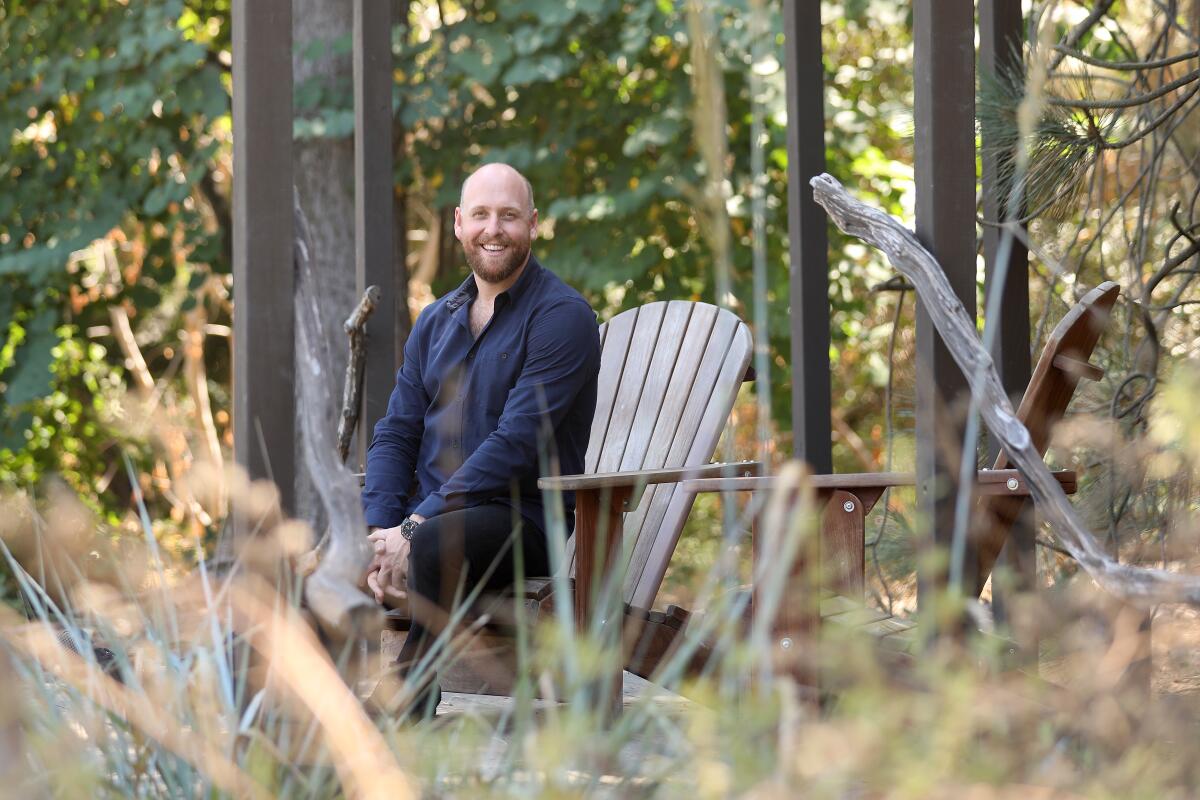
Summer Mozart
The white coats came off on a hot summer Thursday night at the Hollywood Bowl when the L.A. Phil took the stage for its annual all-Mozart concert. Times reviewer Richard S. Ginell, initially disappointed at this year’s conventional Mozart choices, was pleased that conductor Nicholas McGegan and pianist Inon Barnatan “tried to shine a different light upon the Piano Concerto No. 23 in A major with a sophisticated, constantly changing variety of dynamics ... [and] a wit that was evident both to the ear and on Barnatan’s impish facial expressions on the video screens.”
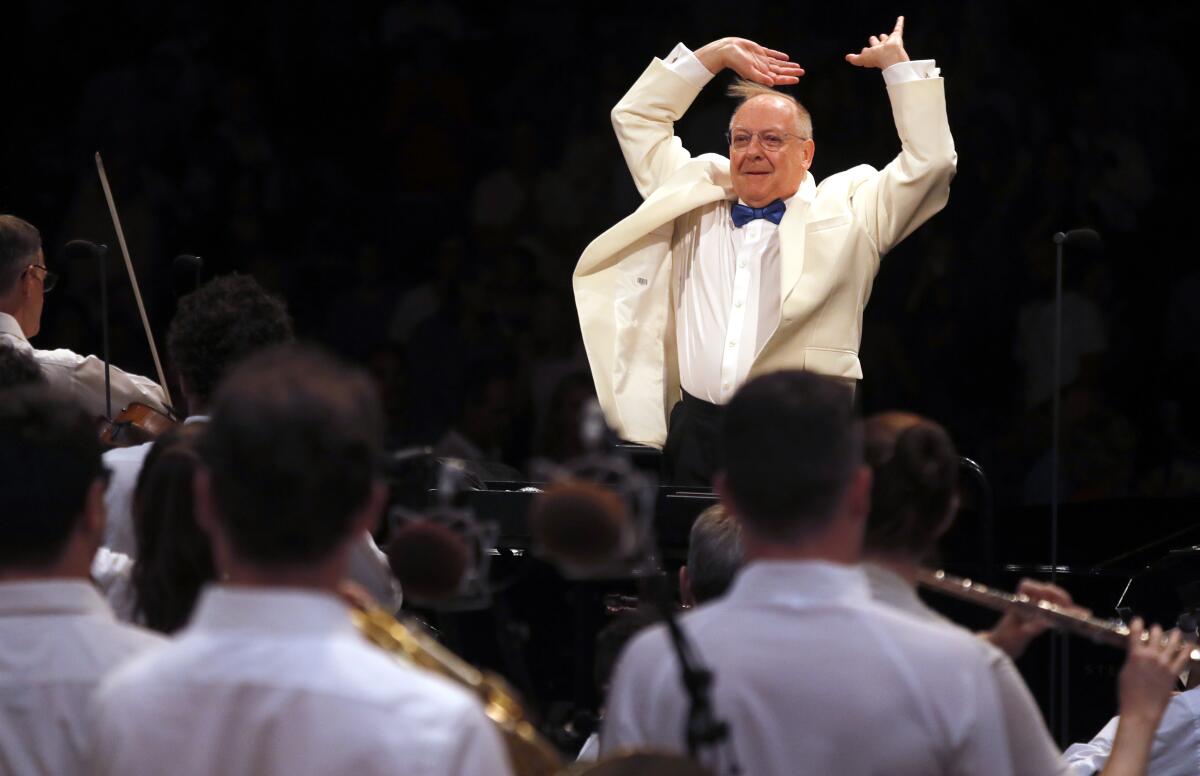
What’s in a name?
At the kickoff for the centennial celebration of the Huntington Library, Art Collections, and Botanical Gardens, the institution’s president, Karen R. Lawrence, announced a name change. The San Marino destination is now the Huntington Library, Art Museum, and Botanical Gardens. “The evolution to the name ‘museum’ is a recognition of the breadth and depth of our collections and the fact that they’re available to the public,” Lawrence said in an interview with Times writer Deborah Vankin.
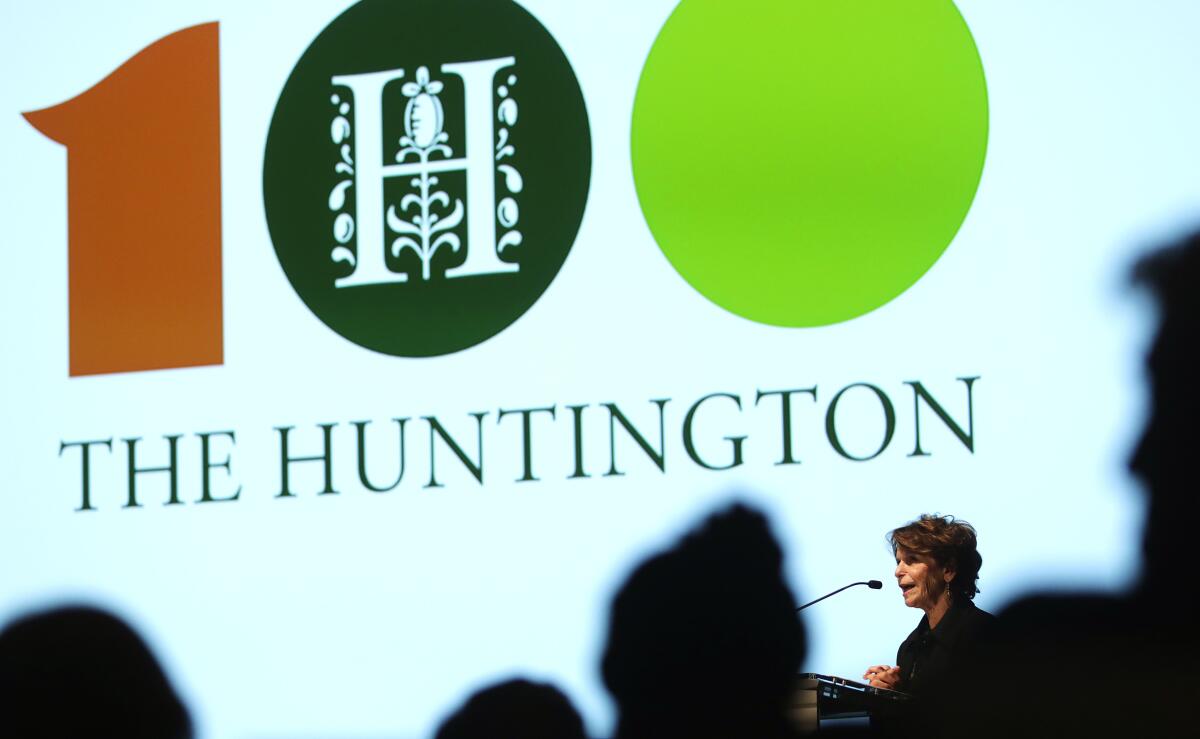
Death of Francisco Toledo
Mexican expressionist painter Francisco Toledo died Thursday at age 79. Mexico’s president, Andres Manuel Lopez Obrador, called Toledo, who was known for his activism against GMO corn and McDonald’s, “an authentic defender of nature, customs and traditions of our people.”
In his appreciation of Toledo, Times Mexico City bureau chief Patrick McDonnell wrote that the “colossus of Mexican culture” was “often seen on the streets of Oaxaca city, recognizable by his disheveled gray hair and bushy beard, his white peasant blouse and leather sandals. He cut a spectral figure, hurried, not keen to be recognized, even as passersby would exclaim: “Maestro!’”
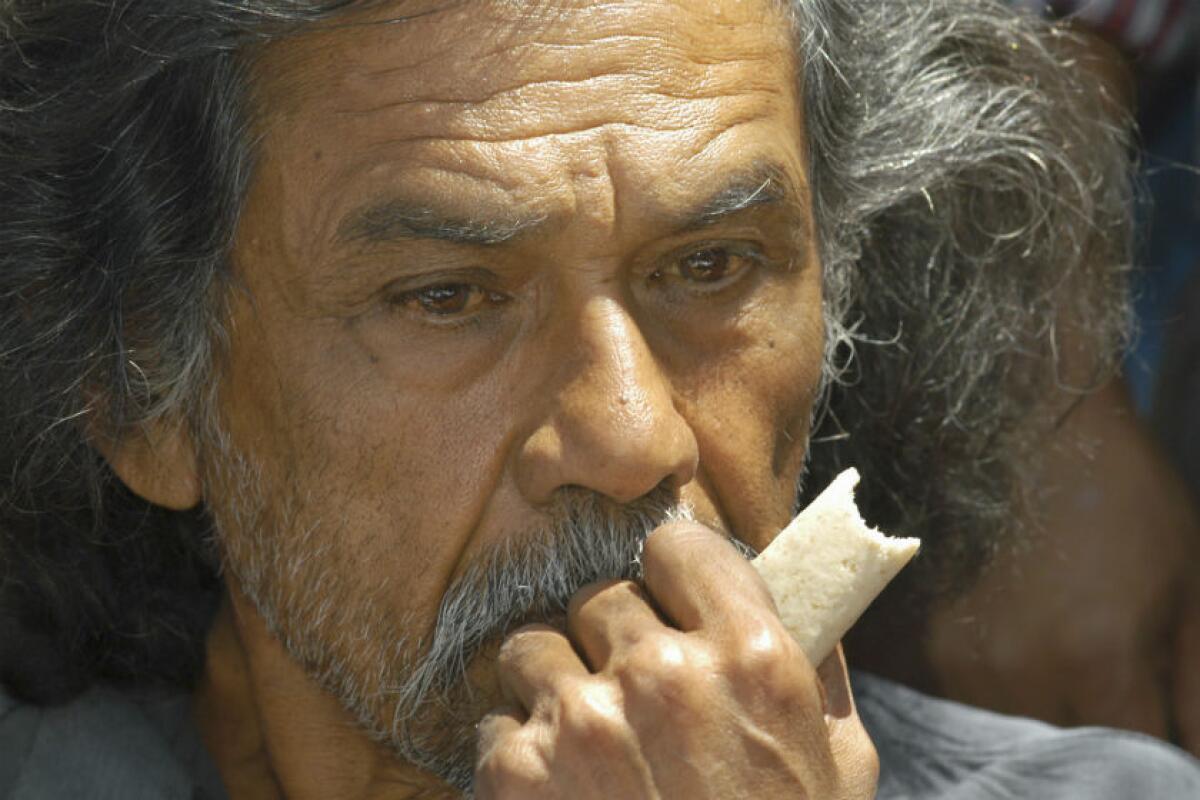
Aqua man retires
After overseeing this year’s opening of Pacific Visions, the $53 million wing of the Aquarium of the Pacific, president and Chief Executive Jerry Schubel announced he will retire. “We’ve created a robust, strong and exciting aquarium,” Schubel, 83, told Times reporter Louis Sahagun.“I achieved everything I was hired to do.”
Finally: Two art mysteries. “A strange phone call from a Southern California auctioneer” who recognized pieces in his gallery as stolen art pictured on the LAPD‘s website led to search warrants — and the recovery “more than 100 stolen paintings, documents and other antiques” from a 1993 burglary spree. Times reporter James Queally details the story.
And was the death of Vincent van Gogh suicide or murder? The Art Newspaper‘s Martin Bailey addresses the often-asked question with 10 reason s why the murder story is a myth.
More to Read
The biggest entertainment stories
Get our big stories about Hollywood, film, television, music, arts, culture and more right in your inbox as soon as they publish.
You may occasionally receive promotional content from the Los Angeles Times.











